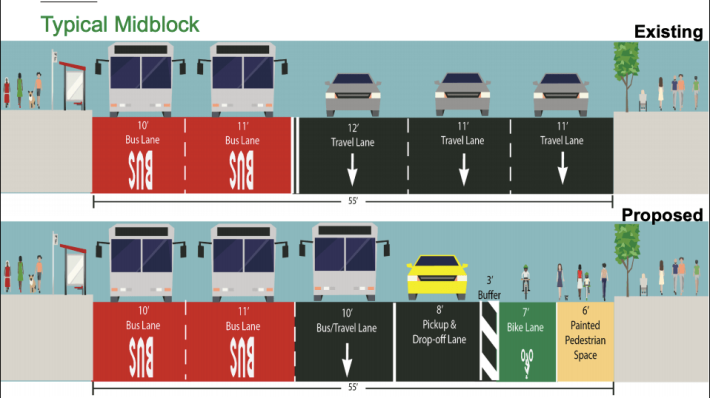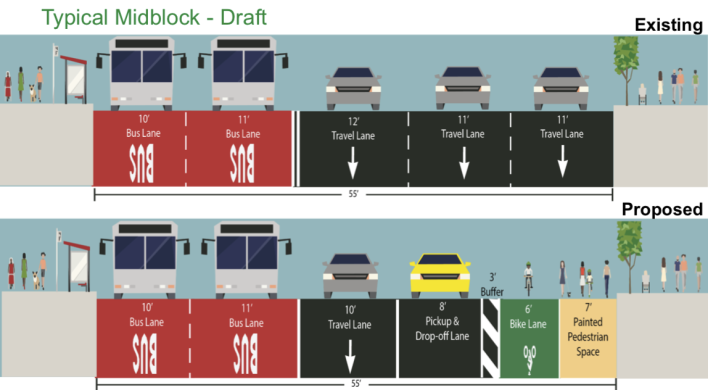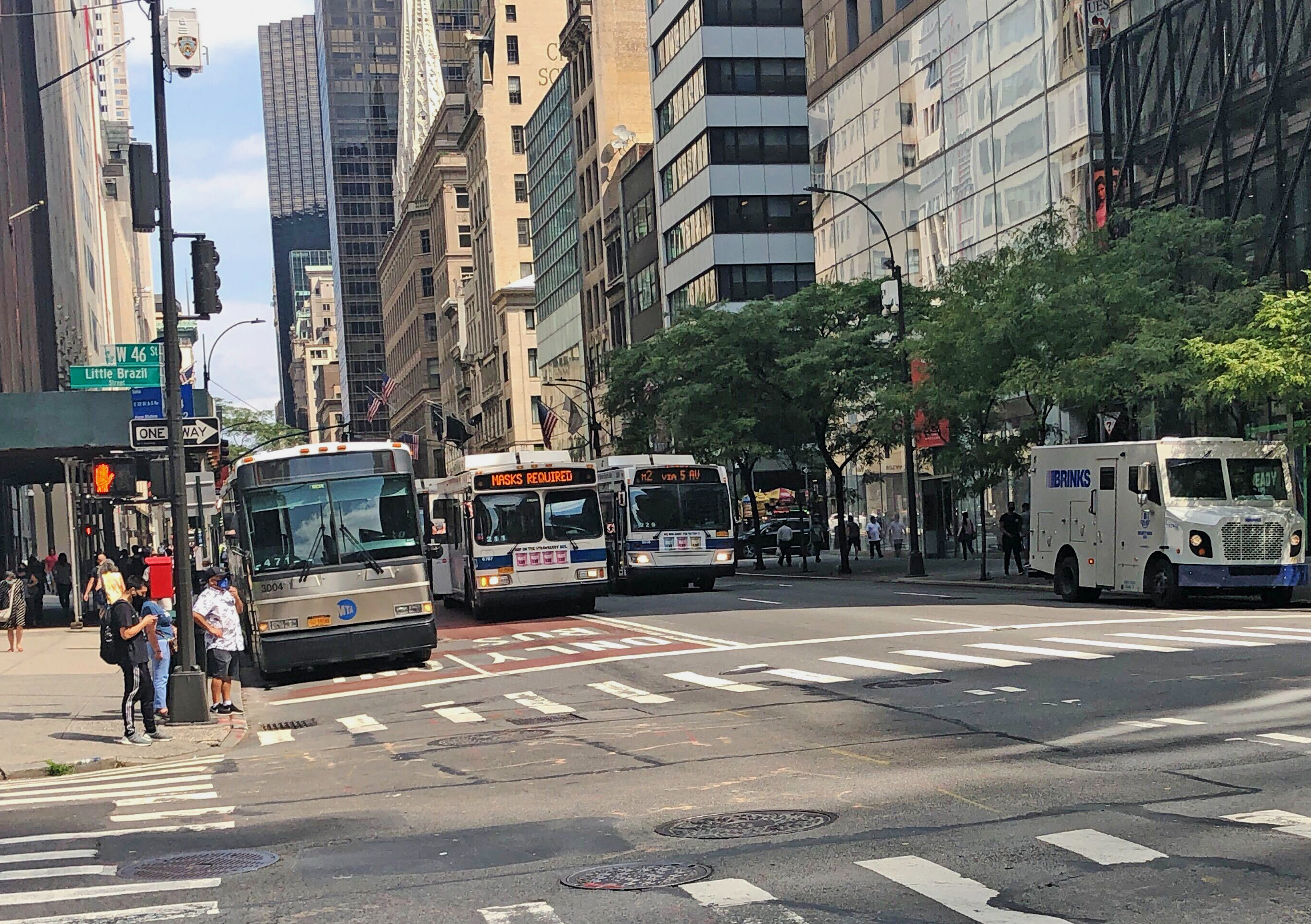Department of Transportation Commissioner Polly Trottenberg defended the city’s apparent reversal on its plans to install a busway along Fifth Avenue, promising that the watered-down proposal will still be a vast improvement to the commercial corridor’s bus riders, cyclists and pedestrians.
Streetsblog reported this week that the city had abandoned its plan to convert the avenue between 57th and 34th streets into a car-free busway just like it did on 14th Street, opting instead for a “complete street” design that no longer features an extra dedicated busway, but still includes a protected bike lane and expanded pedestrian space.
For now, Trottenberg is focusing on the positives of the plan for the corridor — which serves about 110,000 riders a day thanks to two existing dedicated bus lanes. A protected bike lane and additional sidewalk room are definitely improvements in that stretch of Midtown.
“It was always going to be a complete street. A protected bike lane is something that I think has long been a goal of the cycling community and the advocacy community, and a busway. This past month we particularly focused on the bike lane piece of it, we’re going to be back next week talking about the bus lane piece of it,” Trottenberg said Thursday during a press conference on the Jay Street busway — the only one of Mayor de Blasio's promised car-free transit ways that is beginning on schedule.
Trottenberg still avoided the term “busway.”


DOT honchos say they are still soliciting feedback from stakeholders and businesses along the corridor, including noted mom-and-pop retailers like Armani, Dolce and Gabbana, Tiffany and Co, and Rolex, who have expressed concerns about the busway due to their desire to maintain southbound thru traffic for car drivers.
“We’re still working on the traffic restrictions that are going to make the buses work better,” said Janet Jenkins, assistant Commissioner for DOT. “We’re going through our process and talking to our stakeholders.”
But bus speeds along Fifth Avenue, which serves 60 to 160 buses an hour daily along its two existing dedicated bus lanes, would likely improve if the city moved forward with restricting private vehicle traffic. Average speeds on the commercial corridor average just 9 miles per hour in the morning rush and 7.9 mph between 4 and 7 p.m., according to pre-pandemic DOT data, which was still faster than Manhattan's overall average of just under 6 mph.
One particular bus, the M2, which traverses Fifth Avenue, had an average peak-hour speed of 6.2 mph in May, 2019, but a whopping 8.3 in May, 2020, according to MTA data — indicative of how bus speeds dramatically improve when there are fewer cars in the way. And now that vehicles miles traveled throughout the city is creeping back up, the dedicated bus lanes on Fifth Avenue are often blocked — even on a Friday in late August during a pandemic, when Streetsblog observed the area.
But it's unclear why the de Blasio administration decided to focus on Fifth Avenue for a busway when other roadways in Manhattan are still much worse — for example, the M11, which travels down Ninth Avenue, had an average speed of just 5.3 mph in May, 2019, and 7.6 in May, 2020, during peak times.
Nonetheless, Hizzoner announced it in June as one of the five busways, almost all of which have received considerable critiques. None has so far materialized, and the only one slated for an on-time installation is on Jay Street.
“Much ink has been spilled on the fact that a couple of the bus projects have run into some big opposition and we'll work through it as quickly as we can,” said Trottenberg. “But unfortunately not everything was able to happen in the month we hoped it would but I can assure you in the coming months we’re gonna get to everything.”
DOT is expected to present to the Community Advisory Board — which is made up of local stakeholders, elected officials, business-improvement districts, other local business, and organizations — again in early September, and to Community Board 5 again on Sept. 21, with an updated design.
But to be clear: the current design (pictured above) is not the car-free busway as promised by the mayor in June.
— with Adam Light






